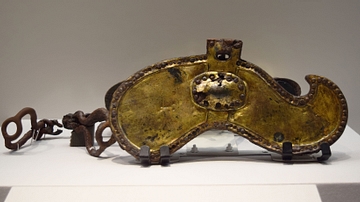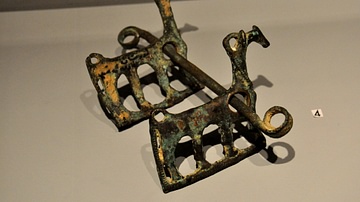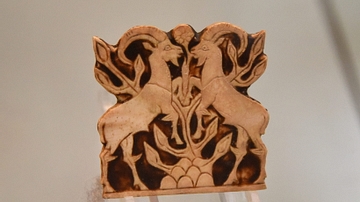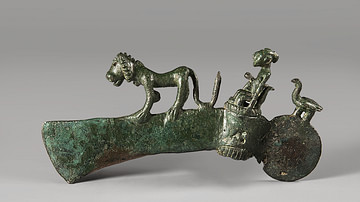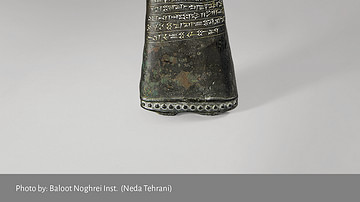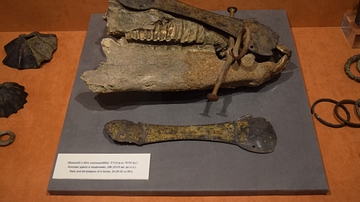Illustration
Luristan Bronze artefact from Iron Age II or III, c. 950-650 BCE.
National Museum of Iran, Tehran.
Acc. no. 3915, Photograph by Nima Fakourzadeh (Baloot Noghrei)
In archaeology, the cast objects with bronze decorations obtained from the Iron Age burial sites of Luristan province in western Iran are typologically recognised as the Luristan Bronze. Luristan became a centre of a remarkable change in the bronze industry from the Mesopotamian into the Scythian style shortly after 1000 BCE. The objects became portable and practical in compliance with the necessities of a nomadic lifestyle – eating and drinking vessels, weapons, finials (presumably to put up tents), and horse fittings. They also tended to be shaped in openwork formats and adorned with appealing and meaningful patterns of the so-called 'animal art'. The realistic or stylised representations of dogs, deer, goats, eagles, and other animals unearthed in Luristan may safely be counted as the regional, bronze precursors of the goldworks of Scythian art a few centuries later. Moreover, they add to our picture of the Iranian settlers of the region from Central Asia, who might have been part of the ancestry of the current Lurs in Iran.
External Links
Cite This Work
APA Style
Iran, N. M. o. (2024, May 15). Bronze Horse Bit with Winged Goats from Western Iran. World History Encyclopedia. Retrieved from https://www.worldhistory.org/image/18938/bronze-horse-bit-with-winged-goats-from-western-ir/
Chicago Style
Iran, National Museum of. "Bronze Horse Bit with Winged Goats from Western Iran." World History Encyclopedia. Last modified May 15, 2024. https://www.worldhistory.org/image/18938/bronze-horse-bit-with-winged-goats-from-western-ir/.
MLA Style
Iran, National Museum of. "Bronze Horse Bit with Winged Goats from Western Iran." World History Encyclopedia. World History Encyclopedia, 15 May 2024. Web. 14 Apr 2025.

